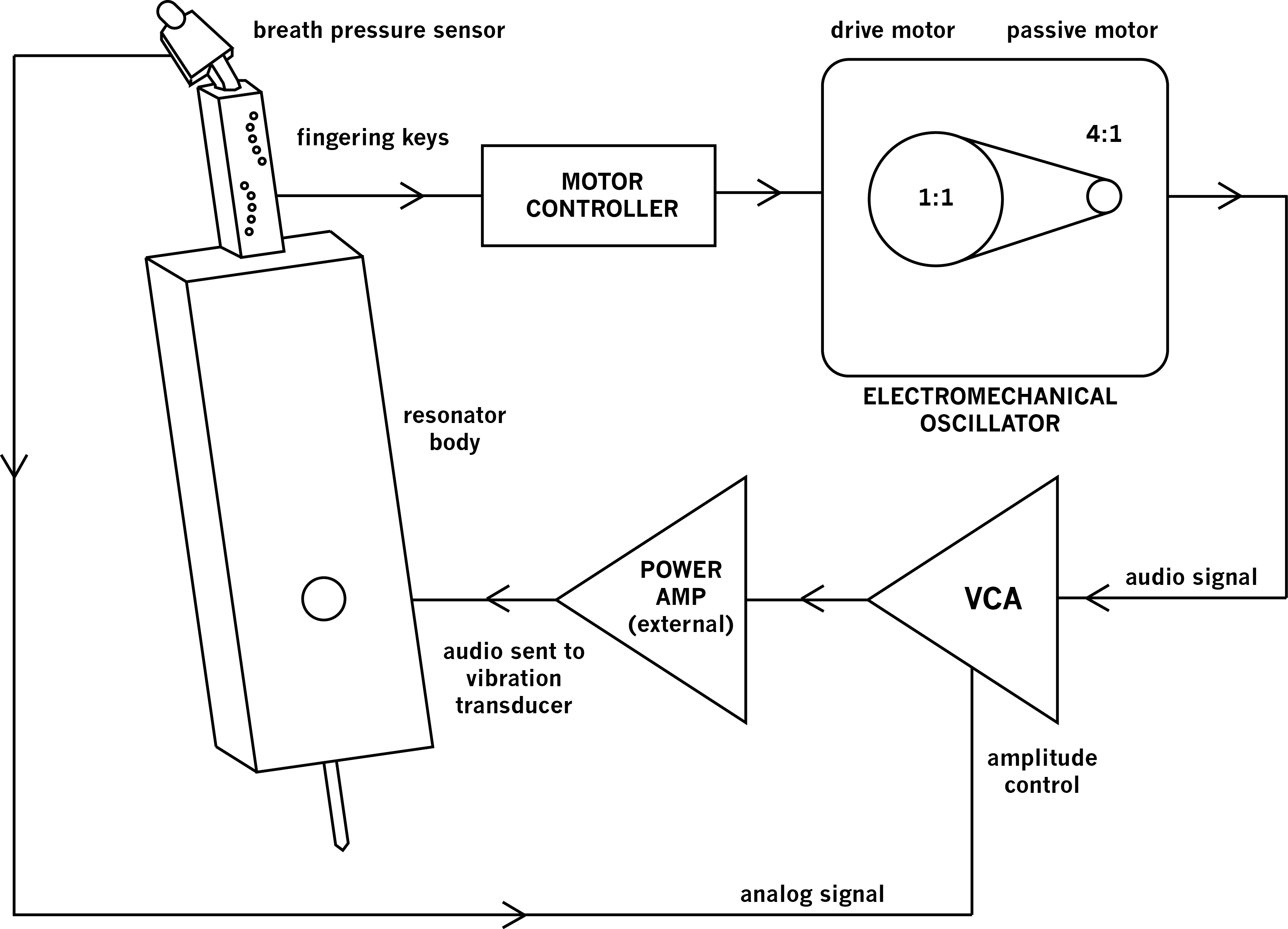
- Birl
The Birl is the wind instrument of my ensemble. Pitches are selected by means of flute/clarinet fingerings on capacitive touch sensors, and a breath sensor controls the amplitude of the sound.
To read the full (twisting, winding) history of the Birl, read my chapter in the book Musical Instruments in the 21st Century, titled The Birl: Adventures in the Development of an Electronic Wind Instrument"
An earlier incarnation of the instrument is described in my dissertation, "Exploration of an Adaptive Just Intonation System".
A later version is described in the conference paper The Birl: An Electronic Wind Instrument Based on an Artificial Neural Network Parameter Mapping Structure
The Birl appears in the pieces Concerning the Nature of Things, Undeciphered Writing, and Fever Dream.
 Pedro Eustache tries out the rev3 Birl. A neural net determines the resulting pitch based on the continuous finger sensor input. Synthesis is a simple subtractive synth.
Pedro Eustache tries out the rev3 Birl. A neural net determines the resulting pitch based on the continuous finger sensor input. Synthesis is a simple subtractive synth.
 Dave Schnug tries out the rev2 Birl. A neural net determines both pitch and timbre based on the continuous finger sensor input and an experimental embouchure sensor. Synthesis is a physical model.
Dave Schnug tries out the rev2 Birl. A neural net determines both pitch and timbre based on the continuous finger sensor input and an experimental embouchure sensor. Synthesis is a physical model.
 Natacha Diels tries out the early Electromechanical Birl. This version of the instrument didn't have continuous finger sensors (they were simple on/off switches). The synthesis output was electromechnical, with a stepper motor spinning at a rate related to the desired frequency, driving another stepper motor that was used as a tone generator.
Natacha Diels tries out the early Electromechanical Birl. This version of the instrument didn't have continuous finger sensors (they were simple on/off switches). The synthesis output was electromechnical, with a stepper motor spinning at a rate related to the desired frequency, driving another stepper motor that was used as a tone generator.












